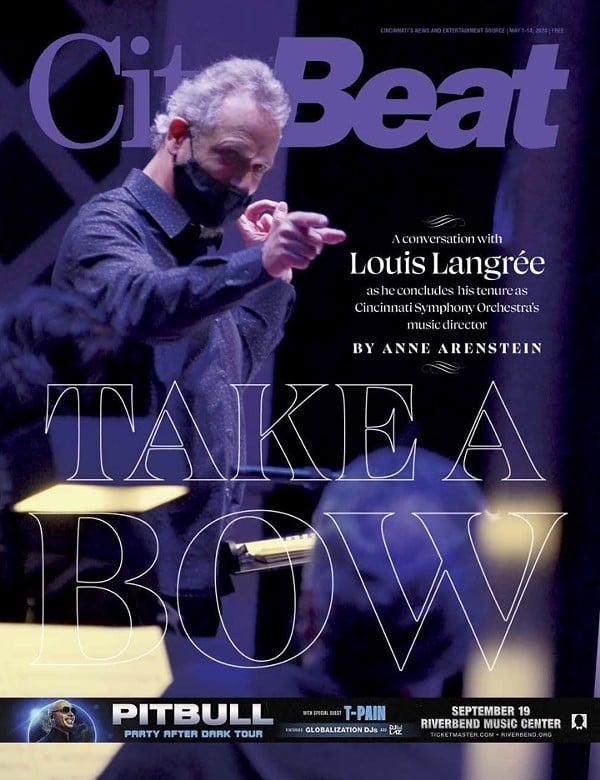When is disclosure of potential or real conflicts of interest sufficient? Or, put another way, when is the absence of disclosure an ethical issue for journalists?
This question of transparency provoked an attack on the World Health Organization’s recommendations on how governments should cope with the then-impending H1N1 pandemic.
For cincinnatibeacon.com blogger Jason Haap, it’s a continuing issue because The Enquirer’s 3CDC stories fail to tell readers that Publisher Margaret Buchanan is a member of 3CDC’s executive committee. Haap finds that relationship especially ironic, given last Sunday’s story and editorial on conflicts involving Cincinnati City Councilman Chris Bortz, his family’s Towne Properties investments and the votes and public financing plan for the proposed downtown-to-Clifton Heights streetcar.
Haap says he used ProQuest to search for Enquirer stories about 3CDC (Cincinnati Center City Development Corp.) that identified Buchanan as the publisher and as a member of the development group’s board. ProQuest said it found none. Even if that web search was imperfect, the absence of at least occasional mention in 3CDC stories is an Enquirer ethical failure.
Need every 3CDC story include Buchanan? No. No more than every mention of Cincinnati’s mayor has to point out that he’s an African American or a Democrat.
My simple Google search for “Buchanan” plus “3CDC” finds lots of links. It’s no secret. It never has been: 3CDC rarely fails to mention Buchanan’s role at the paper when her name is invoked.
Yet I didn’t find an Enquirer story that identified the publisher as a member of 3CDC’s board. A search of Enquirer online archives found a cincinnati.com bio of Buchanan but no news stories about her roles at the paper at 3CDC. I’ve hit this wall before, in part because Gannett policy is to close archives to nonpaying visitors after some fixed period.
In short, there never has been a secret about her role as head of a major urban business with its offices downtown and printing plant in Queensgate. It’s just that Buchanan’s 3CDC role apparently isn’t newsworthy in typically upbeat stories about this private organization’s role in redeveloping the city core.
3CDC isn’t just another developer. Cincinnati city government has abdicated development of the core to 3CDC, so trustworthy coverage is vital. And given The Enquirer’s dominant role in local news coverage, this practice is consistent with the paper’s historic pro-business, pro-development, pro-3CDC bias; it killed the labor beat years ago.
All of this matters to public confidence in the mainstream news media and The Enquirer. Without agreed information, the quality of public debate is eroded or lost. Locally, there is little that’s more important than decisions on the city core.
I have no idea how many people know of Buchanan’s multiple roles as a CEO or are bothered by the knowledge. I wouldn’t be surprised if many readers found her 3CDC participation a plus and Haap’s criticism misguided. On the other hand, coverage of policy decisions at the University of Cincinnati — a powerful economic engine in the city — rarely omits Buchanan’s role on the UC board.
Now, back to the WHO and its advisers. The British Medical Journal notes that key scientists advising WHO on planning for an influenza pandemic had done paid work for pharmaceutical firms that stood to gain from the guidance they were preparing: “These conflicts of interest weren’t publicly disclosed by WHO, and WHO has dismissed inquiries into its handling of the A/H1N1 pandemic as ‘conspiracy theories.’ ”
To their credit, those scientists systematically identified their commercial ties in their publications, but WHO didn’t. That’s the transparency issue.
Does it matter? Governments might not have uncritically embraced WHO advice to stockpile flu vaccine if public health officials — unfamiliar with the advisers’ industry ties — knew more. They might have redirected billions of dollars, risked fewer lives from adverse reactions and avoided the erosion of confidence in their own advice when H1N1 proved to be much less widespread and deadly than feared.
Monday’s Enquirer describes the trashing of outdated vaccine locally. All were purchased with taxpayer money in part because of WHO recommendations.
That’s why conflicts of interest — real or imagined — matter. That’s why transparency matters. We should know the interests of people making public policy and, when it appears the news media are party to silence, it’s not good.
Curmudgeon Notes
• How a story changes. First it was a bum ruining a wedding at Plum Street Temple and being arrested for his intrusion. Then it was the bride publicly defending the man, saying he’d joined the celebration on Plum Street and implicitly that the arresting officer overreacted. It would be a perfect ending to the story if the father of the bride, criminal defense attorney Martin Pinales, appeared as lawyer for the panhandler.
Did the cop overreact? Not if he read Enquirer stories about local businesses and Cincinnati council members spreading fear and loathing of beggars.
• I was fishing out of town when The Enquirer reported its poll on public support for streetcars in Cincinnati. I’ll leave it to others to attack and defend the story, the sample and questions. Rather, I’m still waiting for streetcar supporters to come up with a common, persuasive narrative.
Is it a people mover? Who are those people? Where are those people? Is it an attaboy for potential redevelopers or what? That is the issue, not whether a poll and story fairly reported public sentiment.
• Maybe it’s because I’m not a native Cincinnatian, but I continue to be puzzled at the number of Enquirer letter writers who give suburban addresses and tell “our city” what to do about streetcars, crime or whatever inflames them.
• The Kentucky Enquirer staff remains infatuated with the Creation Museum. A recent story reasonably celebrates the museum’s three years, crowds and economic impact. However, it isn’t enough to say that the exhibits are “controversial” and that “some” scoff at the literal, biblical creation story as history. Where is the explanation for such critiques? “Some” includes most of the world’s scientists, including local scholars whose comments on evolution would have balanced this news story.
• Streetvibes increasingly is an alternative medium among old media in Cincinnati. The biweekly newspaper, sold by vendors for $1 (of which they keep 75 cents), has become more than a voice for the homeless. That’s good because it serves the homeless best by being a readable street paper that provides income for its vendors. It’s also clearly the voice of Editor Greg Flannery, the former CityBeat news editor who finally has found his niche as a journalist.
• By now you’ve seen warring online videos showing some of what happened when Israelis boarded ships bound for Gaza. Al Jazeera and the Israeli press office were among the first, al Jazeera having the advantage of being aboard the large Turkish liner attacked first. It didn’t take long for these to be posted on the Internet. Reactions hardened instantly without time to see/learn more.
• Regardless of the (il)legality of the deadly Israeli interception of would-be blockade busters, too many mainstream news media call it a “botched” raid. Why? Israeli commandos successfully intercepted the Gaza-bound ships. That’s not “botched.” Can anyone hum the theme from Exodus?
• I’m waiting for mainstream reporters and editors who have judged the Israeli interception in international waters to describe rocket attacks from Gaza as “botched” because most Islamists’ rockets land without killing any Jews. Colorful language is one thing, but judgmental adjectives suggest bias in what purports to be news.
• You want scary? Consider the implications of this document: FEDERAL TRADE COMMISSION STAFF DISCUSSION DRAFT: POTENTIAL POLICY RECOMMENDATIONS TO SUPPORT THE REINVENTION OF JOURNALISM. I’m working my way through it now. Perfect beach reading. More in the next column.
• Detroit’s experiment in reducing home delivery to days most vital to advertisers has taken a turn. The daily News and Free Press announced they will sell papers on the other days to independent carriers who’ll make their own arrangements with subscribers who want seven-day home service. The papers said, “We're taking this step for two reasons: First, the U.S. Postal Service is seeking to stop mail delivery on Saturdays. We have 4,500 same-day mail subscribers in the metro area who pay a premium rate to receive the newspaper, and we’ve been looking for a way to continue to meet those subscribers’ needs. And most important, we want to respond to all of our customers who have told us they want seven-day home delivery — and value it enough to pay for it.”
• The nonprofit online Texas Tribute embarrassed a small daily into ending the sale of its news photo showing KILL OBAMA COMIE painted on a local road. Yes, those Texas-educated grafitti artists can’t even spell COMMIE. The Tribune said, “The Victoria Advocate published a story today about some local miscreants with a political message: They’ve been spray-painting anti-Obama graffiti around town, labeling the President a communist and a liar and calling for him to be killed. … The Advocate — like many other papers — uses a photo service that allows readers to buy its pictures in a variety of formats. So Advocate readers who sympathize with the sentiments of the graffiti can purchase ‘Kill Obama’ T-shirts, mouse pads, coffee mugs, even a puzzle.”
The paper, which the Texas Tribune says could have prevented this, has taken down the “buy” option although the photo remains on its web site.
• Skepticism is a virtue among reporters. An adversarial relationship with power can produce useful news when it’s wielded as a scalpel rather than a bludgeon. In that sense, attitudes that shape reporters’ questions can distort the way answers are heard and brought to the public. This is happening with much of the coverage of BP’s repeated failures to staunch the Gulf of Mexico gusher.
It’s become a perfect example of how the news media’s best efforts fuel communal nonsense and partisan malice. Implicitly and explicitly, reporters damn BP — and by extension Obama — for not being able to shut off the unprecedented undersea gusher. This was blatant in questions at the president’s press conference. It stopped short of someone saying, “You’re doing a heckuva job, Barack.”
• There is something that many BP/Obama critics have overlooked: No one prepares for the unthinkable. Think of the recent manmade disaster in New Orleans. Apparently it was unthinkable for the U.S. Army Corps of Engineers that destroying protective barrier islands would matter or a storm surge would overwhelm its levees. BP knew a pipe could rupture, but it appears no one ever thought it could happen in ways that defeated Standard Operating Procedures for shutting down leaks. Call it hubris, but I have no trouble believing that BP considered itself prepared.
• Problems in reporting (or ignoring) the Gulf of Mexico oil calamity can be blamed in part on the lack of experienced environment or science reporters available to local and national news media. These were among the first beats trashed as publisher sought to balance their books in the recent revenue hemorrhage. As a result, too much coverage resembles sports or politics reporting: who’s winning, who’s losing and who is the most official or big name to be quoted. That misses more nuanced questions and contextual stories. And then there is the alpha and the omega of reporting, especially when journalists’ frames of reference are crafted by politicians in an election year: Whom to blame?
• Three journalists with whom I have worked or competed will be inducted into the local hall of fame by the Society of Professional Journalists on June 17: Gloria Brown Anderson, former Sunday magazine editor at The Cincinnati Enquirer and now vice president for international and editorial development at The New York Times; Terry Armor, former videographer for WKRC-TV and photographer for The Cincinnati Post and The Cincinnati Enquirer and retired assistant managing editor for graphics for The Columbus Dispatch; and John Lomax, Good Morning Cincinnati and 12 News at Noon anchor for WKRC-TV-Local 12.
Following the Hall of Fame inductions Anderson is to speak about the future of American journalism. In addition to her time at The Cincinnati Enquirer and nearly 20 years at The New York Times, she worked for the Associated Press, Knight-Ridder and The Miami News. She founded and edited a business magazine, Miami Today, and published and edited the weekly Kendall Gazette, also in Miami.
The Association for Women in Communications presented Anderson with its top honor, the International Matrix Award, in 2005. She has also received the University of Wisconsin’s award for Distinguished Service to Journalism. She has been president of the World Editors Forum (2003-2005), is a member of the Council on Foreign Relations in New York and serves on the advisory board of the University of North Carolina School of Journalism.





